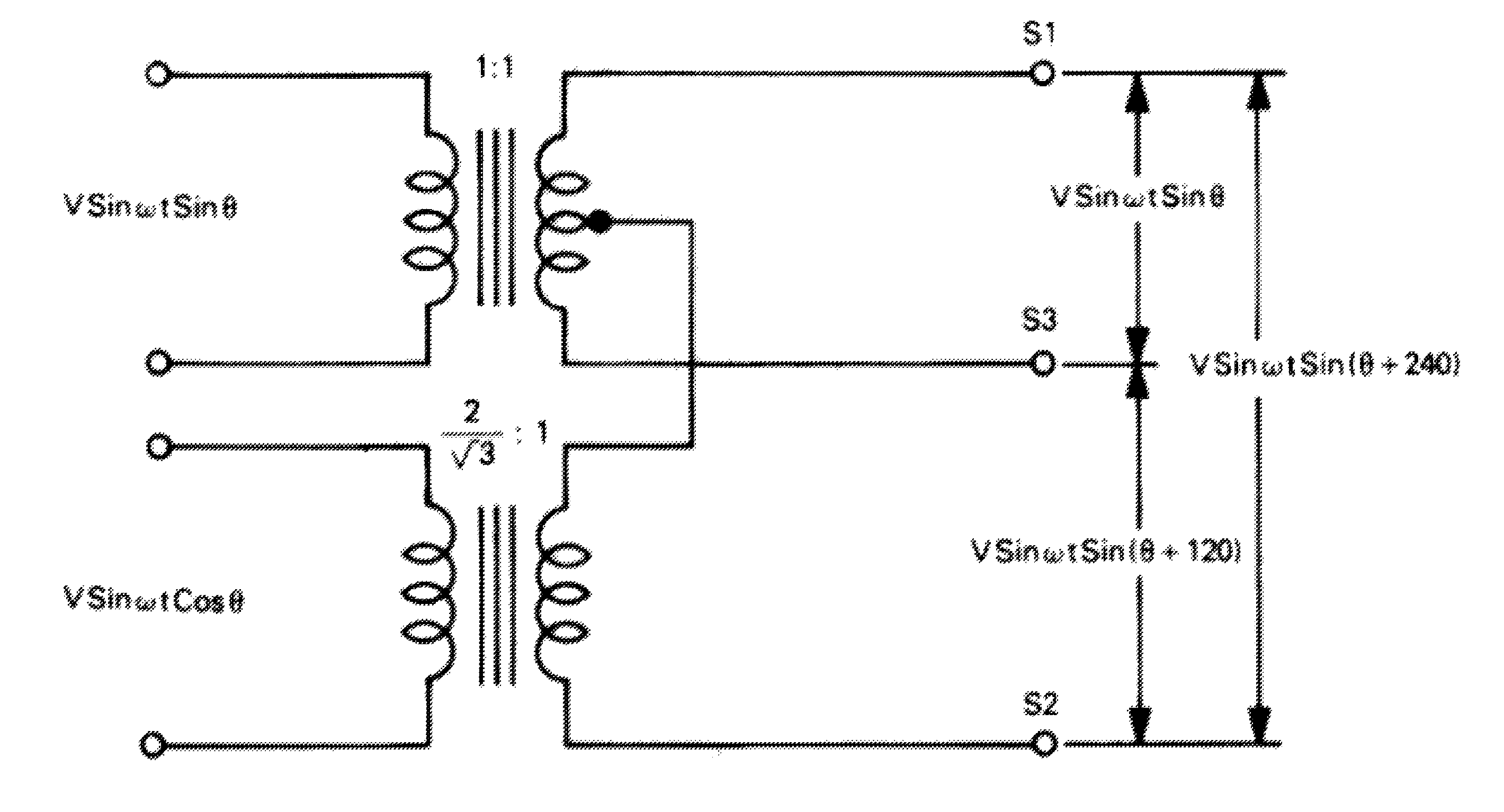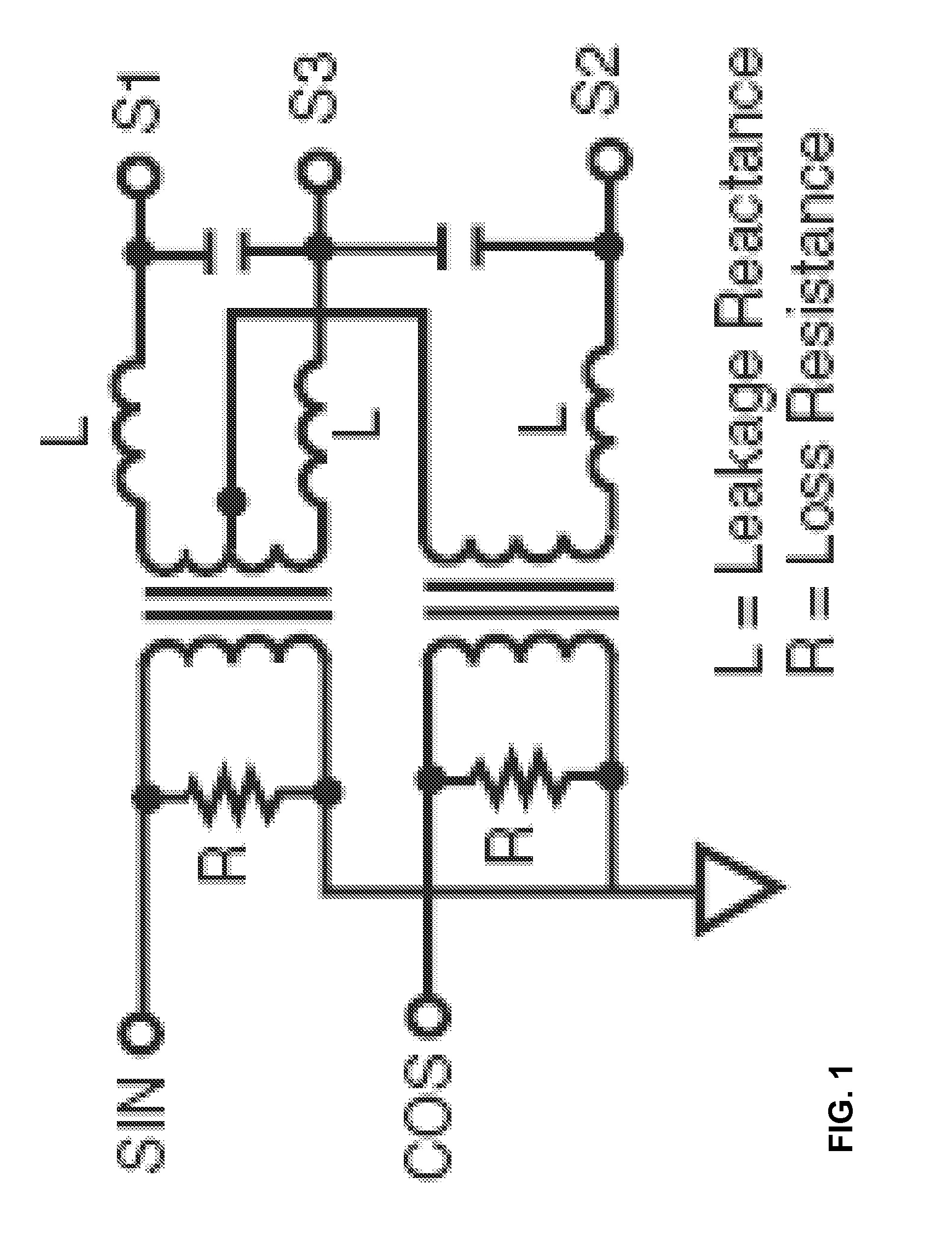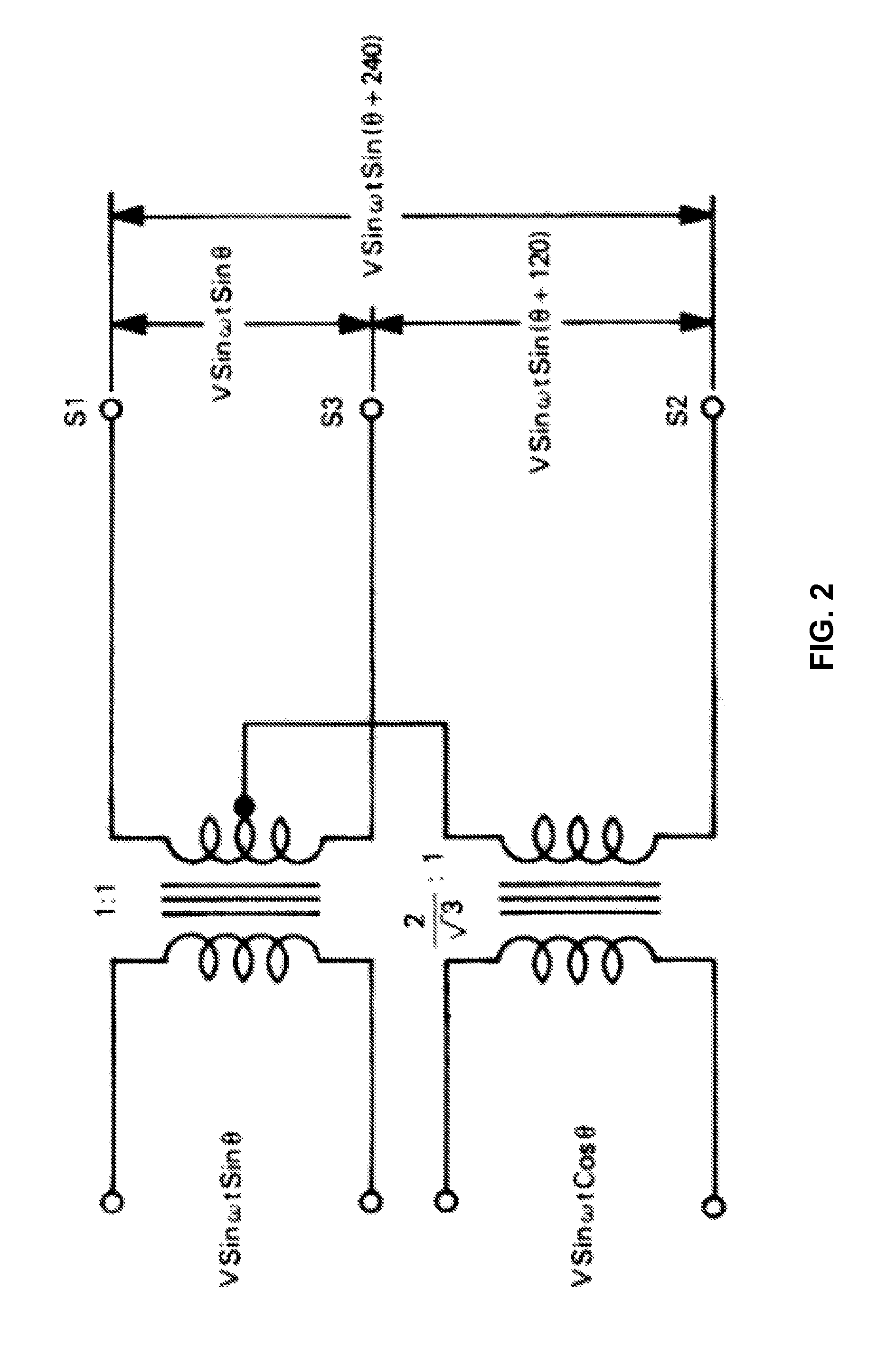Hybrid digital-to-synchro converter unit
- Summary
- Abstract
- Description
- Claims
- Application Information
AI Technical Summary
Benefits of technology
Problems solved by technology
Method used
Image
Examples
Example
[0030]An important distinction between the inventive digital-to-synchro conversion device and traditional digital-to-synchro conversion devices is that the inventive device does not use a “Scott-T” transformer, a type of circuit such as illustrated in FIGS. 1 and 2. FIG. 2 is a simplified digital-to-synchro circuit diagram taken from the aforementioned DDC Synchro / Resolver Conversion Handbook, 4th Edition, page 47.
[0031]Commercially available digital-to-synchro conversion units use a Scott-T transformer exclusively. As shown in FIGS. 1 and 2, according to traditional principles of a Scott-T transformer, its secondary coil windings convert [V Sin({acute over (ω)}t) Sin(Φ)] and [V Sin({acute over (ω)}t) Cos(Φ)], which are input to the primary coil. The Scott-T transformer outputs [V Sin({acute over (ω)}t) Sin(Φ)], [V Sin({acute over (ω)}t) Sin(Φ+120)], and [V Sin({acute over (ω)}t) Sin(Φ+240)] as S1, S2, and S3 synchro signals.
[0032]FIGS. 1 and 2 illustrate the mathematics of the sign...
PUM
 Login to view more
Login to view more Abstract
Description
Claims
Application Information
 Login to view more
Login to view more - R&D Engineer
- R&D Manager
- IP Professional
- Industry Leading Data Capabilities
- Powerful AI technology
- Patent DNA Extraction
Browse by: Latest US Patents, China's latest patents, Technical Efficacy Thesaurus, Application Domain, Technology Topic.
© 2024 PatSnap. All rights reserved.Legal|Privacy policy|Modern Slavery Act Transparency Statement|Sitemap



